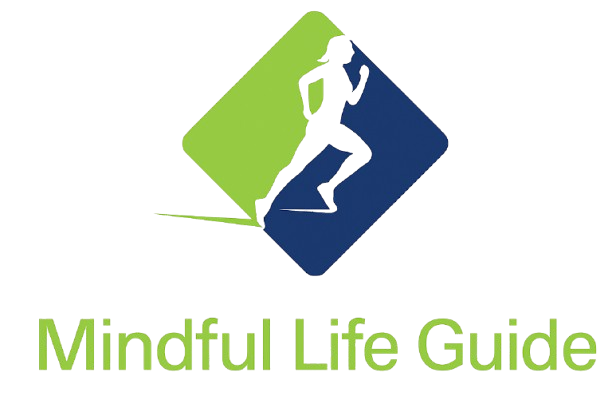
Work stress is like an uninvited guest who shows up at the worst possible time and refuses to leave. It creeps into your mornings, lingers through your lunch breaks, and sometimes even crashes your Netflix nights. I remember a time when I was juggling deadlines for a big project, my inbox overflowing, and my coffee cup perpetually empty. I felt like I was running on a hamster wheel—exhausted but going nowhere. Sound familiar? If you’re nodding along, you’re not alone. According to the American Psychological Association, work-related stress affects nearly 80% of Americans, impacting mental health, productivity, and even physical well-being. But here’s the good news: a balanced lifestyle can help you show that stress the door. In this guide, we’ll dive deep into practical, research-backed strategies to manage work stress while weaving in stories, expert insights, and actionable tips to help you thrive.
Understanding Work Stress: Why It’s More Than Just a Bad Day
Let’s start with the basics: what exactly is work stress? It’s not just a rough day at the office or a grumpy boss breathing down your neck. Work stress is the physical and emotional strain caused by workplace demands, like tight deadlines, long hours, or unclear expectations. Left unchecked, it can lead to burnout, anxiety, and even physical issues like headaches or high blood pressure, as noted by the Mayo Clinic. I once worked with a colleague, Sarah, who seemed to have it all together—until she confessed she hadn’t slept properly in weeks because of looming project deadlines. Her story reminded me that stress isn’t always loud; sometimes, it’s a quiet weight that builds over time.
Why does work stress hit so hard? Our brains are wired to respond to stress as a survival mechanism, but modern workplaces often trigger this response constantly. The World Health Organization estimates that stress costs global economies billions annually due to lost productivity. Understanding this helps us see stress as a signal, not a life sentence. The goal isn’t to eliminate it entirely—some stress can motivate us—but to manage it so it doesn’t manage us.
The Pillars of a Balanced Lifestyle
A balanced lifestyle is like a well-tuned orchestra: every part needs to work in harmony. To manage work stress, we’ll focus on five key pillars: physical health, mental clarity, time management, social connection, and purpose. Each pillar offers practical strategies to create a life where stress doesn’t call the shots. Let’s break them down.
1. Physical Health: Fueling Your Body to Fight Stress
Your body is your first line of defense against stress. When I was burning the midnight oil for a work project, I noticed my energy tanked, and my stress skyrocketed. Skipping workouts and surviving on takeout wasn’t doing me any favors. Research from the National Institute of Mental Health shows that physical activity can lower cortisol levels, the hormone tied to stress. Even a 20-minute walk can make a difference.
- Move daily: Aim for 30 minutes of exercise most days, whether it’s yoga, running, or dancing to your favorite playlist. Apps like Fitbit offer guided workouts if you’re short on time.
- Eat mindfully: Swap processed snacks for nutrient-dense foods like fruits, nuts, and whole grains. A balanced diet supports brain health, as explained by Harvard Health.
- Sleep well: Aim for 7–9 hours of quality sleep. Create a wind-down routine—maybe a warm bath or reading—to signal your brain it’s time to rest.
Small changes add up. After I started prioritizing morning walks and cutting back on late-night caffeine, I felt more energized and less frazzled by midday meetings.
2. Mental Clarity: Taming the Mind’s Chaos
Work stress often feels like a mental tornado—thoughts swirling, focus slipping. Meditation and mindfulness are powerful tools to calm the storm. A study by the University of California, Berkeley found that mindfulness practices can reduce anxiety and improve emotional regulation. When I first tried meditation, I was skeptical. Sitting still for 10 minutes felt like an eternity. But after a week of using a guided app, I noticed I was less reactive to work emails popping up at 8 p.m.
- Try mindfulness: Apps like Headspace offer short, guided meditations tailored for busy schedules.
- Journal it out: Spend 5 minutes writing down your thoughts or worries. It’s like decluttering your mind.
- Limit digital overload: Set boundaries for checking emails or social media. I started muting notifications after 7 p.m., and it was a game-changer.
Mental clarity isn’t about being Zen all the time; it’s about giving your brain a break so it can handle stress better.
3. Time Management: Taking Control of Your Day
Ever feel like there aren’t enough hours in the day? Poor time management can amplify work stress, making tasks feel overwhelming. The American Psychological Association highlights that effective time management reduces stress by giving you a sense of control. I learned this the hard way when I missed a deadline because I underestimated how long a task would take.
- Prioritize tasks: Use the Eisenhower Matrix to sort tasks by urgency and importance. Focus on what matters most.
- Batch similar tasks: Group emails or meetings to avoid context-switching, which can drain mental energy.
- Say no when needed: It’s okay to decline non-essential tasks. Politely setting boundaries protects your time.
Tools like Trello or a simple to-do list can keep you on track. After I started planning my week every Sunday, I felt less like I was playing catch-up.
4. Social Connection: Building Your Support Network
Humans are social creatures, and connection is a stress-buster. A study by the American Heart Association found that strong social ties can lower stress levels and improve resilience. When I was stressed about a work presentation, venting to a friend over coffee made it feel less daunting.
- Reach out: Schedule regular catch-ups with friends or family, even if it’s a quick call.
- Join a community: Whether it’s a book club or a work support group, shared experiences reduce isolation.
- Seek professional help: If stress feels overwhelming, a therapist can offer tailored strategies. Platforms like BetterHelp make it accessible.
Connection doesn’t have to be grand—it’s the small moments, like a laugh with a coworker, that recharge you.
5. Purpose: Finding Meaning Beyond the Paycheck
Work stress often feels heavier when your job lacks meaning. According to Gallup, employees who find purpose in their work are less likely to burn out. I once felt stuck in a job that paid well but left me uninspired. Rediscovering my “why” through volunteering helped me reframe my perspective.
- Align with values: Reflect on what matters to you—creativity, helping others, innovation—and seek ways to incorporate it into your work.
- Set personal goals: Small wins, like learning a new skill, can boost motivation.
- Give back: Volunteering or mentoring can create a sense of purpose outside work.
Finding purpose doesn’t mean quitting your job; it’s about connecting your daily tasks to a bigger picture.
Comparison Table: Stress Management Strategies at a Glance
Balancing Act: Comparing Stress-Busting Techniques
| Strategy | Time Commitment | Cost | Ease of Use | Impact Level |
|---|---|---|---|---|
| Exercise | 20–60 min/day | Free–Low (gym) | Moderate | High |
| Meditation | 5–20 min/day | Free (apps) | Easy | High |
| Time Management | 10–30 min planning | Free (tools) | Moderate | Medium–High |
| Social Connection | Varies | Free–Low | Easy | Medium–High |
| Purpose-Driven Work | Ongoing | Free | Hard | High |
This table shows that no single strategy is “best”—it’s about combining what fits your lifestyle. For example, exercise and meditation are quick wins, while finding purpose takes longer but offers deep rewards.
Real-Life Stories: How Others Manage Work Stress
Let’s ground this in real life. Meet Alex, a marketing manager who felt crushed by constant client demands. He started using the Pomodoro Technique (25 minutes of focused work, 5-minute breaks) and found it reduced his overwhelm. Then there’s Priya, a teacher who turned to yoga after noticing stress-related migraines. She now swears by a 15-minute morning flow to start her day calmly. These stories show that small, intentional changes can make a big difference. The key is consistency—pick one or two strategies and stick with them for a few weeks.
FAQ: Your Work Stress Questions Answered
Q: How do I know if my work stress is normal or something more serious?
A: Occasional stress is normal, but if you’re constantly anxious, irritable, or physically unwell (e.g., headaches, insomnia), it might be chronic stress or burnout. Check in with a doctor or therapist if symptoms persist.
Q: Can I manage stress without quitting my job?
A: Absolutely! Try time management, boundary-setting, and self-care strategies. If your workplace is toxic, explore internal changes or professional support before deciding to leave.
Q: How long does it take to see results from stress management techniques?
A: It varies. Exercise and meditation can show benefits in days, while building purpose or social connections may take weeks. Consistency is key—start small and track progress.
Q: What if I don’t have time for stress management?
A: Start with micro-habits: 5-minute meditations, a quick walk, or a gratitude journal. Even small actions can shift your stress levels over time.
Q: Are there quick stress-relief tricks for the workplace?
A: Yes! Try deep breathing (4-7-8 technique), a quick stretch, or stepping away for a 2-minute break. These can reset your nervous system mid-day.
Conclusion: Crafting a Life Where Stress Doesn’t Win
Managing work stress isn’t about chasing a stress-free utopia—it’s about building a life where stress doesn’t call the shots. By focusing on physical health, mental clarity, time management, social connection, and purpose, you create a foundation that can weather even the toughest workdays. My own journey taught me that balance isn’t a destination; it’s a daily practice. Some days, you’ll nail it—crushing your to-do list, meditating like a pro, and laughing with friends. Other days, you might just manage a quick walk and a deep breath. Both are progress.
Start small: pick one strategy from this guide—maybe a morning walk or a 5-minute journaling session—and commit to it for a week. Track how you feel. If you’re curious about mindfulness, explore apps like Headspace. If time management is your hurdle, try Trello or a simple notebook. And don’t be afraid to lean on your support network—friends, family, or even a therapist can make all the difference.
Work stress might be a persistent guest, but you have the power to set boundaries and reclaim your peace. What’s one step you’ll take today to start building your balanced lifestyle? Reflect on that, and let’s keep the conversation going.
